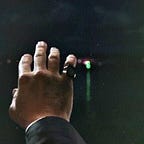The Timeless Genius of Gene Kelly
By Brian Culley
“ I didn’t want to move or act like a rich man. I wanted to dance in a pair of jeans. I wanted to dance like the man in the streets”
- Gene Kelly
During award shows, actors are often introduced with a voiceover telling us how many awards they’ve won. When an actor dies, a news bulletin mentions how many accolades the late thespian earned, commenting on their broader accolades and successes.
But do we care about awards?
We don’t idolise James Dean because he earned two Oscar nominations. We don’t mourn Daniel Day Lewis’s retirement because we won’t see him holding a golden statue again. Nobody googled how many awards did Olivia Newton John win when she passed.
Great actors are not measured by their accolades. They’re measured by how they made us feel. Their impact is measured by the amount of lives they touched.
This is especially true for Gene Kelly.
The list of awards and accolades Kelly earned in his lifetime pales in comparison to the impact he left on cinema and the lasting effect he had, and continues to have, on people’s lives.
Kelly’s humanity is key to his reach. He made dance seem real and accessible (pbs.org, 2006). Although he was a stringent perfectionist and a revolutioniser of dance, Gene’s image was one of the relatable everyman. And his genius was knowing this.
In 1912, he was born into a middle-class Irish-American family in Pennsylvania (wikipedia.org, 2016). His mother was determined to get him to dance and even enrolled him in dance lessons.
Funnily enough, Kelly didn’t enjoy dancing much. He was too busy getting into neighbourhood fights and playing sports. But his time spent hurling fists and footballs formed the basis of his unique dancing style. He had a sporting physicality. He was weighty, strong and grounded (Welsh, 2015).
He also approached dancing like a sport. He trained meticulously, expected perfection of himself and his co-stars, and even taught sporting stars to dance on an episode of Omnibus in 1958 called Dancing, A Man’s Game.
He wanted to demystify dancing — to prove that anyone could and everyone should dance.
He didn’t really have a style. It wasn’t technically perfect. It was instinctual. As Kelly said himself: “I don’t have a name for my style of dancing… it’s certainly hybrid…I have tried to develop a style which is indigenous to the environment in which I was reared.”
That’s not to say Kelly wasn’t deliberate. He enjoyed using specific dance styles to express different emotions. He liked using tap to express joy, as he does in the title song of Singin’ in the Rain and he preferred using ballet and modern dance to express romantic sentiments, as he does in “Our Love is Here to Stay” in An American in Paris (wikipedia.org, 2016)
Kelly used dance to emote. To render his feelings as physical expression. He manifested emotion through dance as a composer does with a film score. Watch one of his numbers with the sound off. You don’t need the music to tell you how he feels.
His movements are musical and emotional. A burst of confidence in his strut. A twinkle to his turns. A joy in his tapping. Melancholy in his stillness. You can see it. You can feel it. Who hasn’t resisted the urge to start splashing in puddles and twirling around lampposts during a bout of heavy rain?
His first wife Betsy Blair put it perfectly when she said —
“His white socks and loafers, or the T-shirts on his muscular torso, gave everyone the feeling that he was a regular guy, and perhaps they too could express love and joy by dancing in the street or stomping through puddles…he democratised the dance.”
Kelly’s greatest trick wasn’t twirling around a lampost, dancing with roller skates or bounding around with Jerry Mouse. His greatest trick was making it all seem so effortless. So natural. So possible. That’s why we remember him, cherish him and continue to talk about him. As Kelly said himself: “You dance love, you dance joy, you dance dreams.”
Kelly will never grow old. Like love, joy and dreams, he is timeless.
References
pbs.org (2006) Anatomy of a Dancer
http://www.pbs.org/wnet/americanmasters/gene-kelly-anatomy-of-a-dancer/516/
wikipedia.org (2016) Gene Kelly
https://en.wikipedia.org/wiki/Gene_Kelly
Corliss, Richard (2002) That Odd Feeling: Dancing Man
http://content.time.com/time/arts/article/0,8599,214066,00.html
Welsh, Jennifer (2015) Fred Astaire vs. Gene Kelly
https://theouttake.net/fred-astaire-vs-gene-kelly-736f795c3b39#.tiwa71h5a
